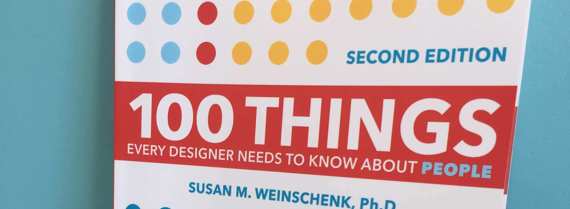An introduction to human behaviour
When you read the title of this book, you may think ‘how arrogant,' however, the author, Thomas Erikson, was inspired by a CEO who said he was surrounded by idiots within his business, but took no accountability for them.
Erikson provides a framework for breaking down human behaviour, arguing that learning about our fellow humans allows us to not only understand them, but also engage with them better from a design perspective, from a research perspective and from a management perspective.
Erikson argues that communication is on the listener's terms - people interpret what is said in their own way, meaning if they already have a bad attitude towards you, they will most likely hear what's said differently to how it's intended.
Another point he makes is that people react out of habit, which they may or may not recognise or accept within themselves. It’s not a matter of normal/abnormal behaviour - it’s about what can be tolerated. According to Erikson, behaviour stems from core values from childhood and attitudes. Understanding this, he argues, will help us work better and live better with our counterparts.
The methodology used
To analyse people's personalities and their approaches, Erikson uses the DISC method of personality breakdown. DISC is based on an ancient Greek method created by Hippocrates.
This method puts personalities into four sections: Red, Yellow, Green and Blue. Erikson states that 80% of people fall within two categories at the same time, 5% of people have 1 dominant type, and the least likely type is Red or Red in a combination. The more you read, the more it is apparent the system isn’t perfect.
Red types are the 'leader' personality. They tend to be strong-willed, decisive and can be perceived as controlling. They tend to speak their minds.
Yellow personalities are the most positive, they tend to be the ones that are most talkative, kind and cheerful. Greens are the most stable and stubborn personality. They don’t take risks, which can frustrate others. They like a calm and comfortable environment.
Greens’ qualities make them an ideal team player, and an attentive friend. They tend to listen more and talk less, meaning they balance out the others quite well. Greens are apparently the most common personality type.
Blue personality types are similar to green, however they are more sceptical, tending towards a glass-half-empty attitude. They think they’re realists, and could have anxiety issues. They also suffer from perfectionism.
The problems that arise
Because of the simplistic nature of how the system is interpreted, in my opinion, it doesn’t take into account that everyone has the capability to show traits of all four types when different scenarios arise.
At work you are a manager; you have to be decisive, a problem solver and take control, in front of your colleagues you have to be positive to keep morale up and be reassuring. At home, you may be a pessimistic person who procrastinates on house chores. With your children, you can be patient, have self-control and be a good listener.
Becoming a leader doesn’t require you to change your personality. Given that leadership can be taught, the idea that it’s a rare trait is false. Every manager and business owner will likely have red tendencies. Now looking at the stats of how many businesses and managers there are, does it appear Red behaviour patterns are so rare? It doesn’t seem plausible.
Another issue that I have is how some of these described traits in each personality can be attributed to neurodevelopmental disorders - for example, having ADHD means you are more likely to procrastinate because of how daunting the task appears, or out of fear of not doing something perfectly. You are also more likely to be depressed too and have anxiety issues. These are all Blue traits. However, in my experience, people with ADHD have shown Red and Yellow qualities too. This is a downfall of this book - assertions are made but they are not backed up in a way that makes sense.
Key takeaways
In spite of its limitations, the book does give some interesting insights into certain behaviours and how they can be dealt with. The biggest takeaway is that you need to be aware of people’s strengths and needs in order to handle them, by being considerate, listening and so on.
This is useful in design research as it can help make the research easier and explain why people do certain things or react in a certain way. It’s also useful when dealing with clients and helps when presenting ideas, conducting ideation sessions, showing research outcomes and so on to stakeholders.
The first step is to try and tune in to the frequency of others and then adapt to them. In this way, you gain their trust and they are able to recognise themselves in you.
This is essentially the moral of the story, and is ingrained into each section of the book. Erikson also highlights different peoples' stresses and other behavioural patterns. If you can recognise those in your day-to-day life, you can learn how to alleviate them, helping them work better or behave in a manner that is more cooperative with yourself and the shared goals you have.
Final verdict
I would recommend the book for the fact it does increase your knowledge of specific behaviours and how to deal with them. The writing style is simple, the language is easy to understand and the concepts are nicely presented. It's a solid introduction to how people are, however things are not this simple and we have to think outside the four boxes.
Find out more about Surrounded by Idiots by Thomas Erikson





